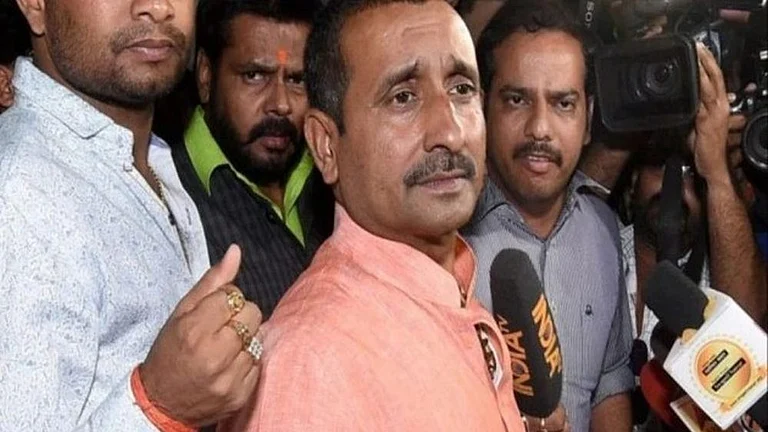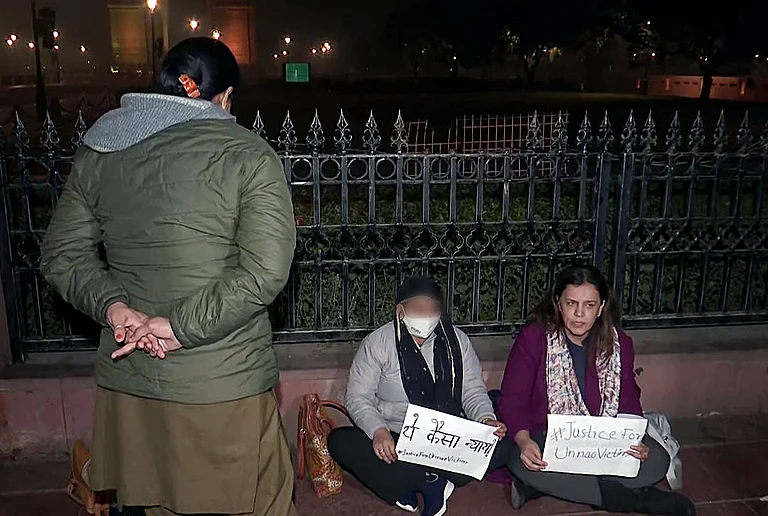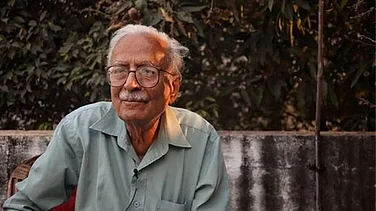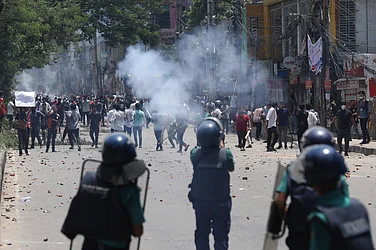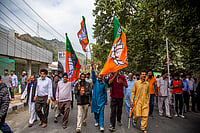In the heart of Ajmer, where the sacred dargah (shrine) of Khwaja Moinuddin Chishti stands as a symbol of spiritual solace, the city’s more sordid history lingers as a dark cloud. While the dargah’s prayers offer peace to many, the streets around it tell a different story — one of a harrowing legal saga that has unfolded over the past 32 years.
In a modest home away from the bustling spiritual epicentre lives a 52-year-old survivor, spending her days tending to a collection of old photographs that tell the story of a life scarred by trauma. These images, capturing her youthful days, stand in stark contrast to the pain she has endured since the infamous 1992 rape and blackmail scandal shook the city.
On August 20, 2024, the long-delayed quest for justice reached a significant milestone as a Protection of Children from Sexual Offences (POCSO) court handed down life sentences to six of the 18 men implicated in the scandal.
The Notorious Rape-Blackmail Case
As the survivor gazed at the court’s verdict, a lifetime of anguish seemed to converge into that single moment of judgment. “I still find it hard to breathe when I think about that day,” she says, her voice tinged with a mix of relief and sorrow. “It has been 32 years, and while the verdict brings a sense of closure, it cannot undo the damage.”
Back in 1992, she was an 18-year-old with dreams and aspirations. A man she trusted lured her to an abandoned warehouse under the guise of watching video tapes. What awaited her there was nothing short of a nightmare: a group of six to seven men, tied her up, subjected her to horrific abuse, and documented the atrocity with photographs.
“I was repeatedly assaulted, and the photographs that were circulated added to my agony,” she says.
The men were from influential families in Ajmer, a city steeped in both historical significance and social privilege in Rajasthan.
“I remember one of them tossing me money,” she recounts, her eyes reflecting the weight of past trauma. “I could not even think about using it. The money was tainted with my pain.”
Decades of suffering followed. Her life unraveled in ways that extended beyond the physical scars of that day: her first marriage ended almost immediately, and her second husband abandoned her after learning about her past. The pervasive stigma led to estrangement from her family and left her living in poverty with only the framed photos of her younger self for company.
But last week, after years of legal battles and public outcry, a court in Ajmer finally convicted six of the 18 accused — Suhail Ghani, Naseem, Syed Jamir Hussain, Saleem Chishty, Iqbal Bhat and Nafis Chishty — sentencing them to life imprisonment. They are high-profile individuals, including influential Khadims (keeper or servants of shrine) associated with the dargah and members of the local Youth Congress. Despite their continued denial of the charges and plans to appeal, the verdict marks a significant turning point.
“For the first time in decades, I feel like justice has been served,” she says, her voice breaking with emotion. “Yet, no amount of legal redress can bring back the years I have lost or mend the broken pieces of my life.”
Her story is one of many in a scandal that shocked Ajmer and beyond, revealing a web of exploitation and abuse involving powerful men who used their positions to prey on vulnerable young women. The case, which erupted into a massive scandal and fuelled widespread protests, has left a lasting impact on the survivors and the community.
The Beginning of the Nightmare
The saga of agony began on April 22, 1992, when the chilling revelation rocked Ajmer. The survivors, predominantly girls from local institutions such as Sophia College and Savitri School were trapped in a web of exploitation involving threats and compromising photographs.
The case came to light thanks to Santosh Gupta, then a crime reporter with Danik Navajyoti. Gupta’s investigative reporting exposed the horrific details of the abuse, including the blackmailing of victims with explicit photographs.
Despite the shocking nature of his findings, justice was elusive. Gupta recalls, “I was stunned by the realisation of how deeply entrenched these powerful men were in the exploitation. The delayed police response allowed them ample time to erase crucial evidence.”
“Can what happened on August 20 really be called justice? A ruling alone doesn’t equal justice,” he remarked.
Gupta, who has extensively covered the case, described the insidious tactics used by the accused. They captured incriminating photographs and videos of their victims, leveraging these images to silence them or coerce them into introducing more victims.
“In one case, the accused invited an acquaintance to a party, got him drunk and then took compromising photos of him,” he explained. “They threatened to release these photos unless he brought his female friends to them. This was their method of ensnaring more victims.”
The accused flaunted their power by parading around in bikes and cars, a sign of their status in what was then a small town. “Their presence was intimidating,” he said. “Some people were scared of them, others sought their favour, and some aspired to emulate them.”
This power played a key role in initially suppressing the case. Despite some awareness among those working at the photo development studio and certain police officers, the matter remained largely concealed.
The turning point came when Gupta’s newspaper made a bold move. Upon receiving some of the disturbing photographs, the paper decided to publish a particularly shocking image: a young girl, exposed from the waist up, being assaulted by two men, one of whom was grinning at the camera. The girl’s face was blurred, but the photograph’s impact was profound.
“The publication of this image triggered an uproar across the city,” Gupta recounted. “Public outrage was immediate and intense, leading to days of protests and a city-wide shutdown. The fury spread throughout Rajasthan.”
This public backlash finally prompted decisive action from the authorities. The case was formally registered as a rape and blackmail investigation and handed over to the state’s Crime Investigation Department-Crime Branch (CID-CB).
Gupta’s reporting had catalysed a significant response, bringing renewed attention and urgency to the case.
A Protracted Legal Battle
The legal journey has been fraught with delays, political interference and shifting alliances. Initially, eight men were sentenced to life imprisonment by Ajmer District and Sessions Court in 1998. However, this verdict was later marred by the acquittal of four by the Rajasthan High Court in 2001 and a Supreme Court ruling in 2003 that reduced the life sentences to 10 years for those still convicted.
Among the accused was Farooq Chishti, a prominent religious and political figure, who was convicted in 2007 but was later deemed mentally unfit for imprisonment in 2013. Another accused committed suicide shortly after his release on bail, and some were later convicted in unrelated cases. The case has seen over a dozen public prosecutors and a myriad of police officials over the years, yet many of the accused never confessed, and justice remained elusive for a long time.
Public prosecutor Virendra Singh Rathore, who has been pivotal in the recent phase of the case, detailed the prolonged nature of the trial, which has spanned over three decades due to various complications. He attributed the delays to multiple factors, including the piecemeal arrests of the accused, alleged obstruction by the defence, inadequate resources for the prosecution and broader systemic flaws within the judiciary.
When the initial charges were filed in 1992, six of the accused — who were only recently convicted — evaded arrest and remained fugitives. Rathore pointed out that this oversight was a significant error. It wasn’t until 2002 that charges were filed against these individuals, but they continued to elude capture. Over the years, arrests were made intermittently: two in 2003, one in 2005, two in 2012 and the final one in 2018.
Each time an accused was apprehended, the trial had to restart, necessitating that survivors and witnesses repeatedly testify. “The law mandates that the accused have the right to be present during witness testimonies and to cross-examine them,” he explained. This legal requirement forced survivors to continuously confront their traumatic experiences.
Rathore recalled the painful moments when survivors, now in their 40s and 50s, expressed their frustration in court, questioning why they had to endure this process years after the original crimes. The lengthy trial had also made it increasingly difficult for the police to locate witnesses. “Many witnesses no longer wished to be involved, having moved on with their lives,” he said.
Adding to the complexity, one of the accused remains at large. If this individual is captured or if the convicted appeal the verdict, the survivors and witnesses may be summoned once again.
One of the key survivors, whose testimony was crucial to the recent convictions, shared her perspective. “I have consistently told the truth about what happened to me,” she said. “I was young and innocent when they violated me, and it took everything from me. Now, I have nothing left to lose.”
The Political and Social Ripple Effects
The case was not just a legal battle but also a political battleground. The involvement of prominent figures from the Youth Congress and their connections to the local political landscape added layers of complexity. The Vishwa Hindu Parishad (VHP) and emerging Bharatiya Janata Party (BJP) took the opportunity to fuel public outrage, further complicating the case with political agendas.
Rajasthan’s then-Chief Minister, Bhairon Singh Shekhawat, assigned the investigation to the CID-CB, but by then, many victims had vanished or withdrawn from the public eye due to the stigma associated with the trial.
Hari Prasad Sharma, a retired police officer who was the Deputy Superintendent of Police in 1992, claims there was no undue delay. He boasts about the imposition of the National Security Act on the accused, a first in Rajasthan for such a large number of people.
However, the practical difficulties in gathering testimonies from survivors, many of whom had left the city or committed suicide, complicated the proceedings.
The Courtroom Struggles and Recent Developments
In the courtroom, the ordeal for survivors continued. Witnesses, including men who had been exploited, faced intense and often humiliating questioning. Rathore recalls a particularly distressing moment from 2022 when a victim, now a grandmother, expressed her despair in court.
His decision to push for the consideration of previous testimonies without requiring survivors to recount their traumatic experiences again reflects his deep empathy for their plight.
Rathore’s work is ongoing, with concerns that the remaining accused, including Almas Maharaj, who is allegedly residing in the U.S., may still return to face justice. The case remains a poignant reminder of the complex interplay between justice, politics, and social stigma.
A Legacy of Pain and Hope
The Ajmer rape-blackmail case is a stark reminder of how deep-rooted corruption and power can affect justice and individual lives. It has taken more than three decades for some semblance of justice to be achieved, but the scars remain fresh for the survivors. As the city of Ajmer and the legal system continue to grapple with the aftermath, the resilience of the victims and the tireless efforts of individuals like Rathore highlight the ongoing struggle for true justice in the face of overwhelming challenges.
For the survivor and others like her, the journey is far from over, but the recent convictions offer a glimmer of hope that, even after many years, justice can still be pursued. The case stands as a testament to the enduring fight against sexual violence and the quest for accountability in the face of seemingly insurmountable odds.







